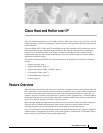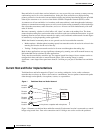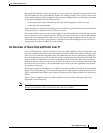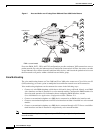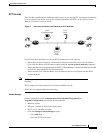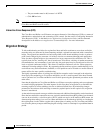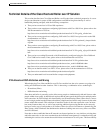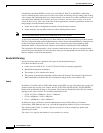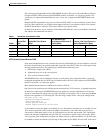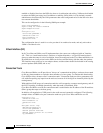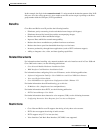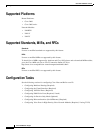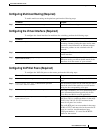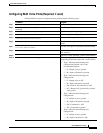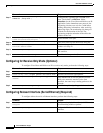
Cisco Hoot and Holler over IP
Feature Overview
2
Cisco IOS Release 12.1(5)T
Hoot and holler is used in these various industries as a way to provide a one-to-many or many-to-many
conferencing service for voice communications. In the past, hoot and holler was deployed using
point-to-point telco circuits and a hoot and holler bridging and mixing functionality that was provided
either by the customer or as a service of the Public Switched Telephone Network (PSTN) carrier.
A common use of hoot and holler is a broadcast audio network that is used throughout the brokerage
industry to communicate morning reports as well as to advise the trading community within a brokerage
firm on market movements, trade executions, and so on. All users can talk simultaneously with each
other, if desired.
But more commonly, a broker in a field office will “shout” an order to the trading floor. The shout
ensures that the trading floor can hear the order and a floor trader can confirm the transaction. A typical
brokerage firm has several of these networks for equity, retail, and bonds with network size and degree
of interactivity varying depending on the application.
Within the financial community there are two general uses for hoot and holler networks:
• Market updates—Market update (morning report) hoot networks tend to be active for an hour in the
morning and inactive for the rest of the day.
• Trading—Trading hoot networks tend to be far more used throughout the trading day.
Both of these applications can reap significant advantages by running over an IP network because any
idle bandwidth can be reclaimed by data applications.
Today most hoot and holler customers pay for separate leased line charges from a common carrier to
transport their hoot and holler to remote branch offices. This recurring charge is usually
significant—some larger firms spend more than $2-3 million per year just to distribute hoot and holler
feeds.
Current Hoot and Holler Implementations
Traditional hoot and holler networks (Figure 1) are analog, multipoint, 4-wire, audio-conference
networks that are always up. When a user wants to communicate, the user pushes a button and speaks
either through a microphone, a hoot phone, a turret, or a squawk box.
Figure 1 Traditional Hoot and Holler Network
Figure 1 illustrates a traditional hoot and holler network. Each remote location is connected to a central
bridge using leased lines. Four-wire connections and N-1 bridges are used to avoid echo problems.
R
emote
lo
cation
R
emote
lo
cation
R
emote
lo
cation
R
emote
lo
cation
Leased lines
4-wire phone or speaker with microphone
Central site
3
5836
N-1
voice
bridge



